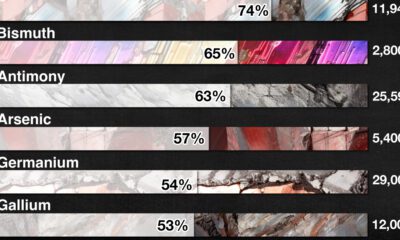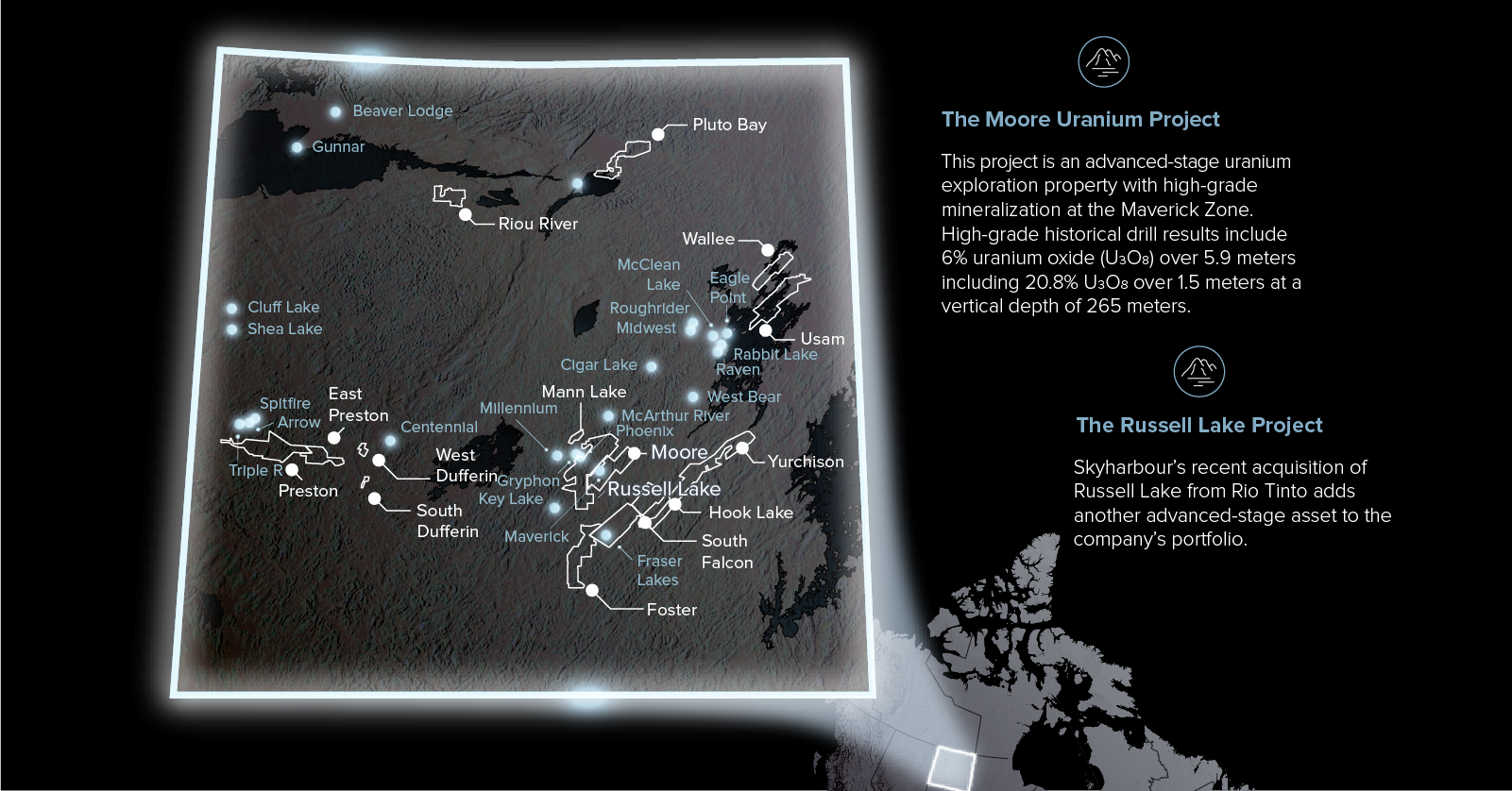The Next Generation of Uranium Deposits

The Next Generation of Uranium Deposits
Government policies are shifting in favor of nuclear energy as countries try to reduce carbon emissions.
Unlike coal, oil, or gas, nuclear power plants produce little to no CO₂. As a result, nuclear is the second largest source of low-carbon electricity in the world, behind hydropower.
In this infographic from Skyharbour Resources, we look closely at the next generation of uranium deposits necessary to power up the nuclear sector.
The Uranium Supply Squeeze
Roughly 440 nuclear reactors operating worldwide generate around 10% of the world’s electricity annually.
In the United States, for example, nuclear energy provides 52% of carbon-free electricity, and in the European Union, it accounts for 43%. In three European countries, the share of nuclear energy in the electricity mix exceeds 50%.
| Rank | Country | Nuclear Share of Electricity Mix |
|---|---|---|
| 1 | France 🇫🇷 | 70.6% |
| 2 | Slovakia 🇸🇰 | 53.1% |
| 3 | Ukraine 🇺🇦 | 51.2% |
| 4 | Hungary 🇭🇺 | 48.0% |
| 5 | Bulgaria 🇧🇬 | 40.8% |
| 6 | Belgium 🇧🇪 | 39.1% |
| 7 | Slovenia 🇸🇮 | 37.8% |
| 8 | Czechia 🇨🇿 | 37.3% |
| 9 | Armenia 🇦🇲 | 34.5% |
| 10 | Finland 🇫🇮 | 33.9% |
| 11 | Switzerland 🇨🇭 | 32.9% |
| 12 | Sweden 🇸🇪 | 29.8% |
| 13 | South Korea 🇰🇷 | 29.6% |
| 14 | Spain 🇪🇸 | 22.2% |
| 15 | Russia 🇷🇺 | 20.6% |
| 16 | Romania 🇷🇴 | 19.9% |
| 17 | United States 🇺🇸 | 19.7% |
| 18 | Canada 🇨🇦 | 14.6% |
| 19 | United Kingdom 🇬🇧 | 14.5% |
| 20 | Germany 🇩🇪 | 11.3% |
All of the world’s nuclear reactors are powered by uranium. They require approximately 67,500 tonnes of uranium annually. However, the uranium market has been in a growing deficit since 2015, with the widening demand-supply gap being filled by civil stockpiles and secondary sources.
The World Nuclear Association expects a 27% increase in demand between 2021 and 2030.
In addition, the recent energy crisis following Russia’s invasion of Ukraine has led investors to the uranium market, betting on nuclear energy to shift away from fossil fuels. In this scenario, new uranium mines are expected to come online in the next decade to meet the demand.
The World’s Richest Uranium Region
Canada is the world’s second-largest producer of uranium, accounting for roughly 13% of total global output.
The country’s Athabasca Basin has the highest-grade uranium deposits in the world, with grades that are 10 to 100 times greater than the global average. The Northern area covers almost a quarter of Saskatchewan and a small portion of Alberta.
The region— sometimes described as the “Persian Gulf of uranium” — is home to Cameco’s Cigar Lake, the world’s richest uranium mine.
According to the Fraser Institute, Saskatchewan ranks as the second-best mining jurisdiction in the world. The province appears only behind Western Australia regarding geologic attractiveness, government policy, and attitudes toward exploration investment.
In recent years, many uranium companies have made uranium discoveries in the basin, with Skyharbour Resources among them. The company holds an extensive portfolio of fifteen uranium exploration projects, ten of which are drill-ready, covering 450,000 hectares of mineral claims.
The U.S. Nuclear Future
While the Biden Administration is urging lawmakers to pass a $4.3 billion plan to purchase enriched uranium from domestic producers, the country’s production is still considered small in scale.
For this reason, Athabasca Basin and companies like Skyharbour Resources are expected to play a key role in the U.S.’ nuclear future.
Skyharbour Resources is becoming an industry leader in high-grade Canadian uranium exploration needed for nuclear power and clean energy.

-

 Mining3 days ago
Mining3 days agoGold vs. S&P 500: Which Has Grown More Over Five Years?
The price of gold has set record highs in 2024, but how has this precious metal performed relative to the S&P 500?
-

 Mining2 weeks ago
Mining2 weeks agoCharted: The Value Gap Between the Gold Price and Gold Miners
While the price of gold has reached new record highs in 2024, gold mining stocks are still far from their 2011 peaks.
-

 Uranium2 months ago
Uranium2 months agoCharted: Global Uranium Reserves, by Country
We visualize the distribution of the world’s uranium reserves by country, with 3 countries accounting for more than half of total reserves.
-

 Markets3 months ago
Markets3 months agoThe Periodic Table of Commodity Returns (2014-2023)
Commodity returns in 2023 took a hit. This graphic shows the performance of commodities like gold, oil, nickel, and corn over the last decade.
-

 Strategic Metals3 months ago
Strategic Metals3 months agoChina Dominates the Supply of U.S. Critical Minerals List
The U.S. Geological Survey estimates that in 2022, China was the world’s leading producer of 30 out of 50 entries on the U.S. critical minerals list.
-

 Mining5 months ago
Mining5 months agoThe Critical Minerals to China, EU, and U.S. National Security
Ten materials, including cobalt, lithium, graphite, and rare earths, are deemed critical by all three.


